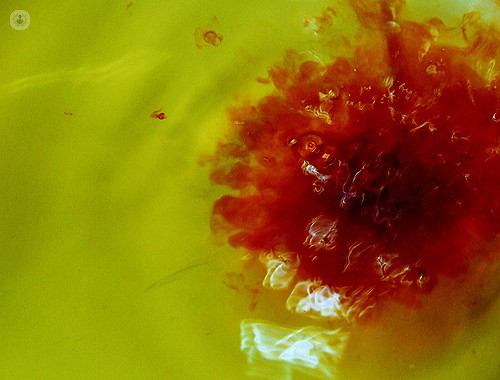Haemoglobinuria
Dr Lalita Banerjee - Haematology
Created on: 03-12-2013
Updated on: 04-04-2023
Edited by: Sophie Kennedy
What is haemoglobinuria?
Haemoglobinuria is the presence of excess haemoglobin in the urine. Haemoglobin is a molecule in red blood cells (RBCs), which helps transport oxygen and carbon dioxide through the body. Red blood cells tend to live for about one hundred and twenty days and then break down into parts that can produce a new red blood cell. This normally occurs in the spleen, bone marrow and liver.
If the red blood cells break down in the blood vessels, the components, including haemoglobin, move through the bloodstream, eventually being filtered by the kidney into the urine. If red blood cells appear in the urine, it is referred to as haematuria.

What are the symptoms of haemoglobinuria?
The main symptom that a patient with haemoglobinuria displays is a change in the colour of the urine, which will turn reddish or brown.
It can also be accompanied by:
- Shortness of breath
- Headaches
- Arrhythmia
- Chest pain
- Abdominal pain
- Bruising easily
- Blood clots
Haemoglobinuria is itself a symptom of other conditions.
Causes of haemoglobinuria
A number of things can lead to haemoglobin in the urine, including:
- Kidney disease
- Kidney cancer
- Burns
- Malaria
- Sickle cell anaemia
- Tuberculosis
- Poisoning
There is also a genetic condition known as paroxysmal nocturnal haemoglobinuria (PNH), which is caused by a spontaneous genetic mutation rather than an inherited gene. PNH involves a defective protein on the surface of the red blood cells, which causes the immune system to attack them and destroy them. This condition is destructive and even life-threatening if left untreated.
What is the treatment for haemoglobinuria?
Haemoglobinuria is detected with an analysis of the urine and blood. The treatment will depend on the cause. In the case of paroxysmal nocturnal haemoglobinuria, the only cure is a bone marrow transplant.
